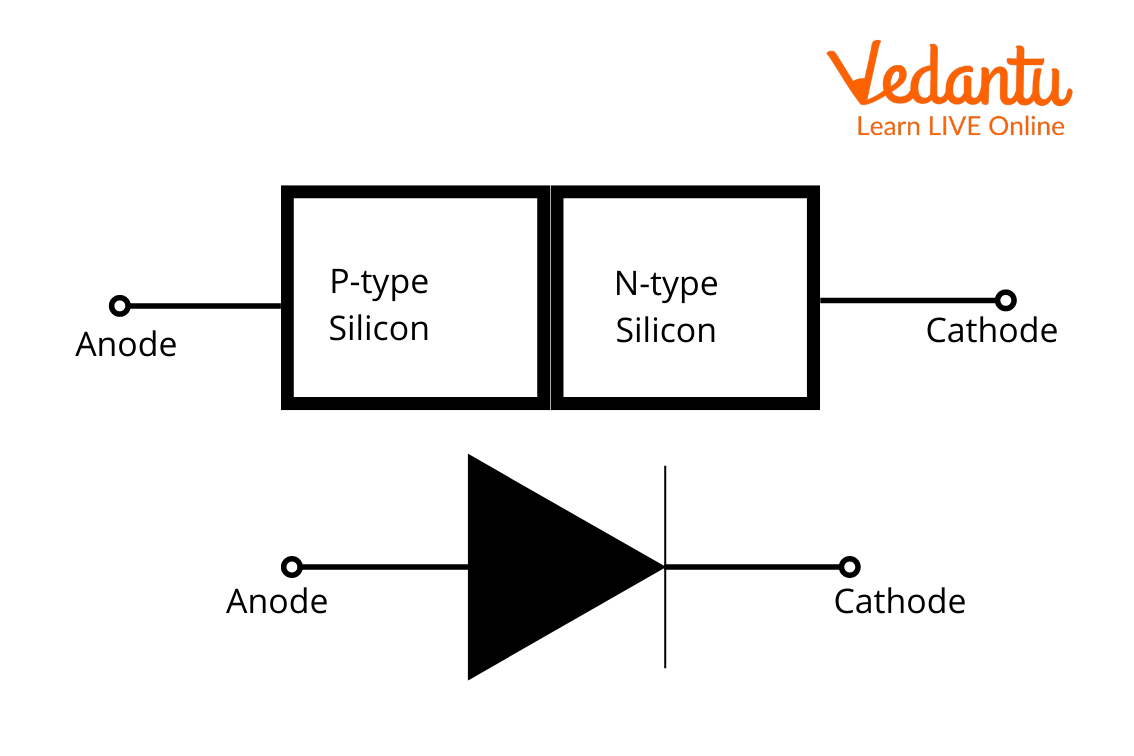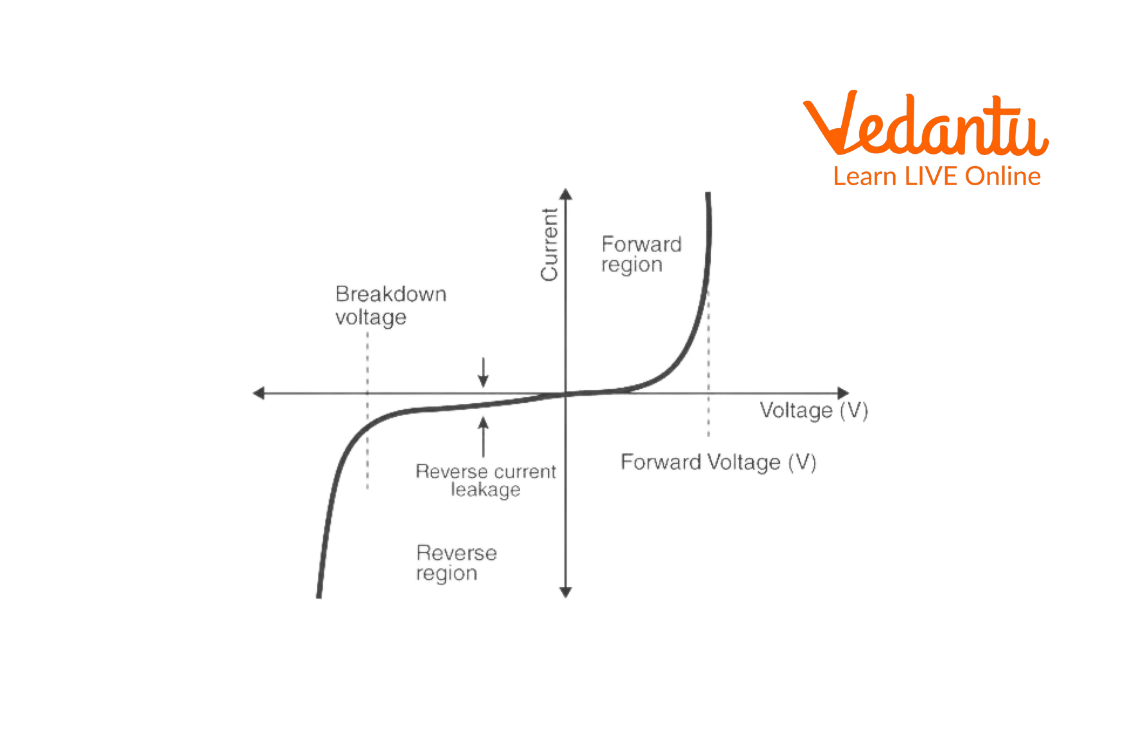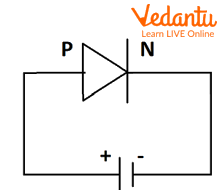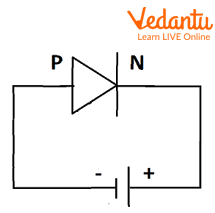




Reverse Bias: An Introduction
In Electronics, diode operations mainly revolve around the flow of negatively charged electrons and positively charged holes. In technology, we refer to a semiconductor diode as a pn junction. They play an important role in electronic circuits and make it possible to bring large-sized electronic items to an unimaginable smaller size by their proper use. Biasing is a method of setting a set of proper currents or voltages required for the smooth operation of the circuit or that electronic system, specifically.
We come across two types of biasing in our circuit. One is forward biasing, and the other one is reverse biasing. In a pn junction diode, current carriers flow majorly in only one direction, but if the external voltage applied is in the opposite direction; that condition is said to be reverse biasing.
What is pn Junction Diode?
A pn junction diode is formed when a p-type semiconductor is joined to an n-type semiconductor as a result of which, a potential barrier voltage is developed across the diode junction.

Diode symbol
The depletion region is the space around the boundary of contact between the two diodes, which is formed by the overlapping of positively charged holes and negatively charged electrons, thereby removing any free charge in that region. This is the reason why it is called a depletion region.
History of Inventor
Russell Shoemaker Ohl was an American Scientist born on January 30, 1898. He was the one generally recognized for getting modern Solar Cells patented. He worked a great deal on light-sensitive devices. He was a notable semiconductor researcher before transistors came into being known. He also worked on material research, investigating diode detectors, suitable for military radar, high-frequency wireless and broadcasting.

Russell Shoemaker Ohl
pn Junction Diode Working
Current in a diode flows because of majority and minority charge carriers. In n-type semiconductors, electrons are the majority charge carriers, and holes are the minority charge carriers, whereas in p-type semiconductors, holes are the majority charge carriers and electrons are the minority charge carriers.
Because unlike charge accommodation at the boundary of the junction of the two diodes, a depletion layer is formed which affects charge flow across the diode. When the pn junction is connected across a voltage source, different kinds of flow are observed under different biasing, which we will read below.
pn Junction Diode Characteristics

pn junction diode characteristics
Biasing of a Diode
When the pn junction is connected to a battery, it is said to be biased. There are two kinds of bias:
Forward bias diode
Reverse bias diode
Whenever the positive terminal of the battery is connected to the p-type semiconductor and the negative terminal of the battery to n-type semiconductor, the pn junction is said to be forward-biased.

Forward bias
When an n-type semiconductor gets a positive terminal of the battery and a p-type semiconductor gets a negative terminal, pn junction is said to be reverse biased.

Reverse bias
What is Reverse Bias?
In the reverse bias condition, free electrons diffuse into the p-type region and recombine with the holes, whereas holes diffuse into the n-type semiconductor to combine with electrons. As a result of this, the width of the depletion region increases and no more holes or electrons cross the junction. Even if we supply regulated voltage, no current flows through the diode, hence, pn junctions act like an open switch in case of reverse biasing.
Some Important Questions
1. How does the width of the depletion region get affected in forward and reverse bias?
Ans: Width of the depletion region:
Increases in case of reverse bias
Decreases in case of forwarding bias.
2. How is the Zener diode fabricated for use?
Ans. Zener diodes are made by heavy doping of both p-type and n-type semiconductors. This leads to a decrease in the width of its depletion region, which leads to the production of a large electric field, increasing the current even on applying a high reverse voltage of up to 5V.
3. How is the Zener diode used as a voltage regulator?
Ans.: For large changes in reverse current, the voltage across the Zener diode remains equal to the breakdown voltage because the Zener diode is operated in the reverse breakdown region, therefore, acts like a voltage regulator.
Summary
First, we discussed what a pn junction is, how it operates and how it is made using n-type and p-type semiconductors. Then we read about biasing and its different types, i.e., forward bias and reverse bias. We also discussed the effects of these biasing techniques on the pn junction diode. Next, we read about the inventor of biasing methods, Russel Shoemaker Ohl, an American scientist. Finally, we dealt with some important solved questions based on biasing and pn junction diodes.
List of Related Articles
Forward biasing
FAQs on Reverse Bias
1. Explain the construction of the pn junction diode.
When a p-type semiconductor is suitably connected to an n- type semiconductor, the contact surface between them is called a p-n junction. Electronic device consisting of the p-n junction is known as p-n junction diode. It has only two terminals. One of them is connected to a p-type crystal and another one is connected to an n-type crystal. The terminal connected to the p-type crystal is called anode and the terminal that is connected to the n-type crystal is called cathode.
2. Write two differences between forward and reverse biasing.
In forward biasing we attach a positive terminal of the battery to p-side of the diode and negative to the n-side of the diode. Whereas in reverse biasing we do vice versa, i.e., we connect the positive of the battery to n-side and negative to p-side. In forward bias, the charge carriers drift towards opposite terminals moving across the diode which leads to decrease in width of depletion layer. Whereas in reverse bias, the charge carriers are drifted towards the opposite terminals moving away from the depletion layer which leads to increase in the width of the depletion layer.
3. Why is current in reverse bias independent of externally applied potential up to a certain voltage?
Under reverse bias conditions, holes get attracted towards the negative terminal and electrons towards the positive terminal of the battery. This increases depletion layer width and potential barrier as well. However, the minority charge carriers are responsible for a small current flow across the depletion layer. At any temperature, the number of minority current carriers remains constant, hence independent of any kind of external voltage.











